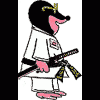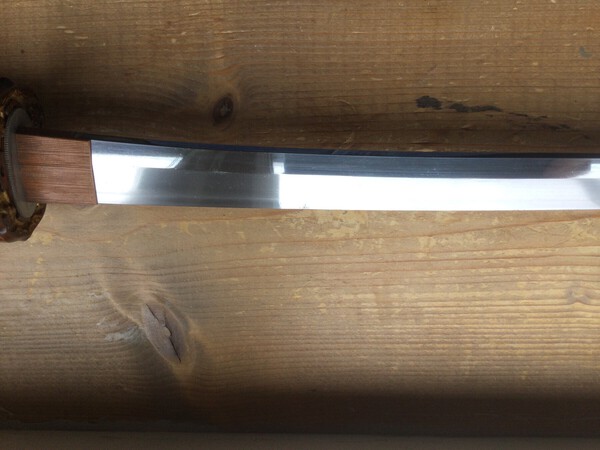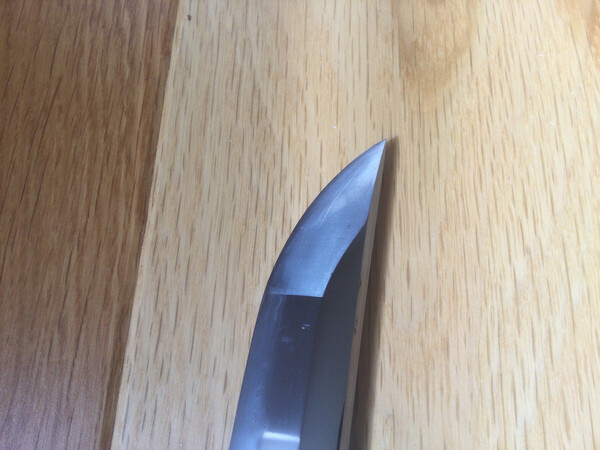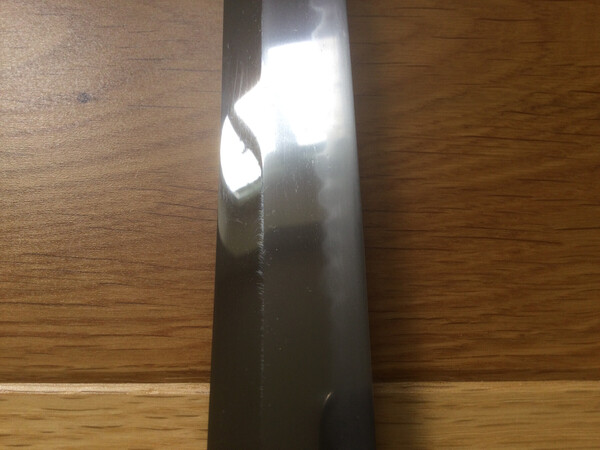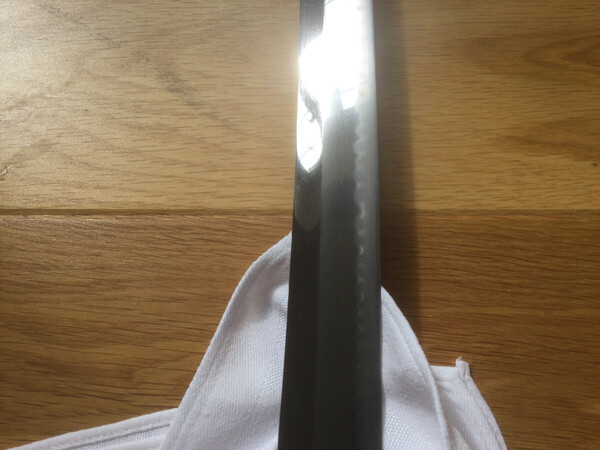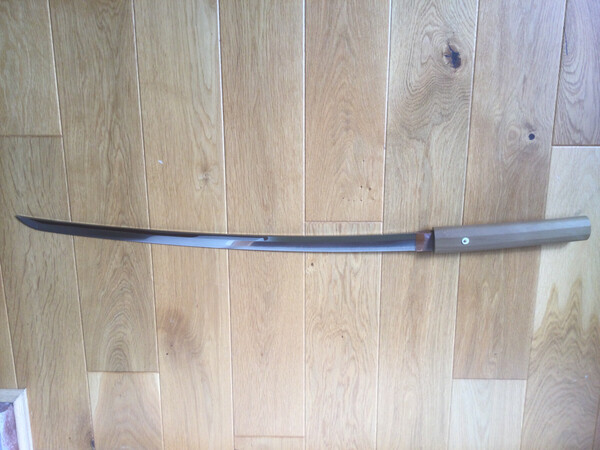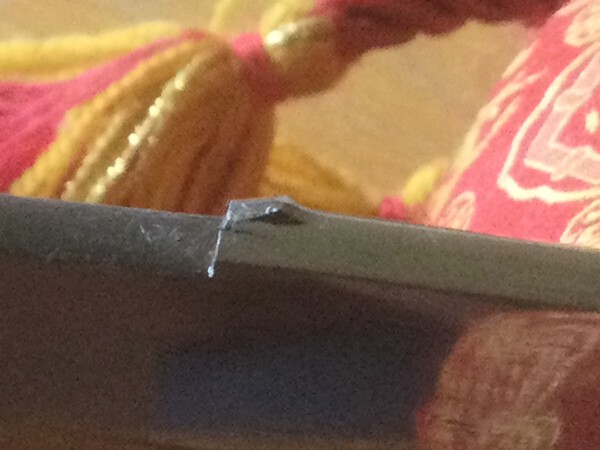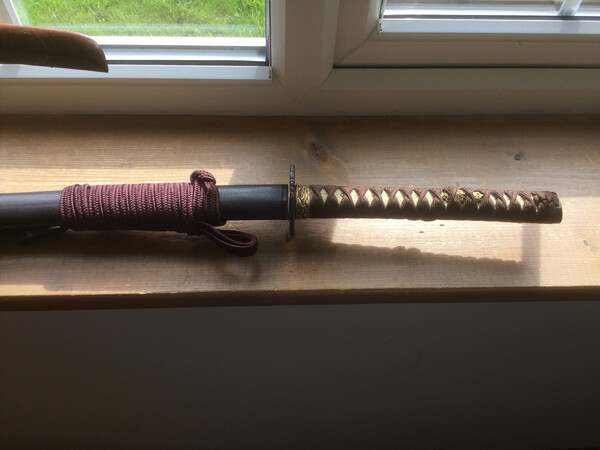-
Posts
363 -
Joined
-
Last visited
-
Days Won
1
Everything posted by Moley
-
Wow! Thanks Bruce.😍
-
Thanks for this @Bruce Pennington. I feel a lot better now. So when I study my Mantetsu and my eye zeroes in on the blemish. I NOW think.. " Mmm m Another £2K when I only paid £1K for it..?" I go.. "What a wonderful piece I have and so lucky for having it". Out of curiosity, Tell us YOUR story .. PLEASE ?
-
Advice needed, My almost near perfect Mantetsu has a small blemish in the hamon. This is how I got it. I know many would say leave it alone. But, even though small, my eye can’t help but focus on it every time I study it. I live in the UK so not easy to fix. How to feel better about it?
-
Hi Guys, I have an E Mura blade that I love to bits. Gives me lots of pleasure. Wondering, does anyone else have an E Mura ? If so , mine is in Shira Saya. Would LOVE to see other examples. Regards Gwyn During World War II a swordsmith named Chounsai Emura (real name: Emura Shigetato), originally from Tokushima in Shikoku, operated a swordmaking school on the grounds of the Okayama Prison. He made sword blades himself and also trained prisoners to make sword blades in support of the Japanese war effort. Emura san died in 1960. He made numerous very good blades which are now much sought after by collectors and students of the Japanese sword. The following is an excert from an article from TOKEN SYNZU (Showa 55, Feb. 7, No. 213) as translated by Chris Bowen: Yoshikawa Tsunetaro (father of the current NTHK head, Yoshikawa Kentaro) wrote an article in the Token Synzu called "Nihonto to Kyo ni", which means roughly, "Swords and I". In this article, Yoshikawa sensei reminisces about his days as a polisher and official for the military's sword polishing office during the war years. In the middle of the article, he mentions an Emura san, the head of a prison in Okayama. Yoshikawa states that in his official capacity, he often travelled around the country to inspect and "looked in on" various tanrenjo around the country. He mentions that his visit to this prison forge was perhaps the most touching of his trips. He states that Emura san signed blades "Emura" and sometimes "Emura Chounsai". He says that he made blades in the Bizen style with choji hamon. (3) The article reads: "Among my visits, the most memorable was a visit to a prison in Okayama. The head of the prison, Mr. Emura, while not a professional smith, made swords as a hobby. The swords made (by Emura) were polished within the prison by the prisoners. Blades were signed using his family name, "Emura", and also "Emura Chounsai". These blades were made with a nioi based shimatta choji in the Bizen tradition. At first, before entering the facility, I wondered what type of person would be in this prison-I felt a bit of anxiety at the thought of these criminals. When the time came and I entered the prison, I witnessed the prisoners, large streams of sweat pouring from their brows as they worked, and I forgot my prior anxiety. I clearly remember the strenuous effort with which the prisoners toiled as they learned the craft of the sword." (3) Kiyoshi Morita noted that Emura exhibited his swords at the 1st Gunto exhibition in 1943; these were signed as being from Doshu in Kochi prefecture, not from Bishu in Okayama. This would lead one to speculate that before 1940 Emura was in Takamatsu city in Kagawa prefecture in Shikoku. Around 1940 he was located in Okayama prefecture (Bishu-mei) as the head of the Okayama prison, then around 1943 he returned to Kochi prefecture (Doshu-mei). Probably various mei were used as he was the head of Okayama prison and travelled considerably.(10) There is at least one documented case of a Japanese Army General surrendering an Emura blade at the end of the Pacific Conflict. Lt-Gen.(Japanese 17th Army) Kanda Masatane's sword, an Emura made blade, was surrendered on September 16, 1945 in New Guinea to Brigadier Garret of the Australian 2nd Corp. The sword now resides in the Australian War Museum (cat. no. AWM20314). [This information was obtained from Fuller & Gregory "Japanese Military and Civil Swords and Dirks". (4)] Emura blades have received Hozon origami from the NBTHK in Japan. Emura blades have also received Shinteisho and Kanteisho origami from the NTHK(3). This confirms that Emura blades are judged to be true gendaito.
-
Wow, never knew this until now. Thanks.
-
Ainu ????
-
Search for the movie... "The Twilight Samurai" . Based on a true story.. Worth a watch on this subject.
-
LOVING IT SO FAR Guys.. PLEASE carry on. I want to learn. Can anyone post example photos side by side so we can compare and contrast? i.e. an elaborate work that is quite inexpensive with a simple one that is costly. (Must point out that I am not bitching about prices in this thread, I realise that they cannot be made today without breaking the bank, and that they are all superb value considering age and craftsmanship I am just interested in how prices compared way back then for different types and why prices vary so much today even one tsuba is so elaborate and another seems basic.)
-
The cost of tsuba varies greatly, from a couple of hundreds to thousands. Types vary enormously and everyone has a particular favourite. Sometimes l am amazed that some types that seem very very simple iron works to me command such high prices. Some to my eye even look crudely made and yet are quite expensive. My question is this. Does the price of tsuba today reflect the price that it cost to buy when it was made, or has rarity and collectors tastes dictated that an otherwise cheap tsuba now costs a lot lot more?
-
Just "Caught me a Fish". Thanks Grev.
-
BUMP - For a great guy.... EMAIL SENT GREV.
-
Thanks to Grev (Kissakai) for this beauty. I will be the envy of the Iaido Club in the new year. I have bought many items from Grev in the past and he is a scholar and a gentleman.
-
PM sent.
-
Oooohhh
-
Me too - What Stephen said....
-
Hi everybody, Saw this sword in the for sale section by Matt and l am very intrigued.l will admit that l never knew that the Japanese army had these mountings. Please can someone educate me further . I would be ever so grateful. Thank youall. Gwyn. “Excellent condition Army kyu-gunto sword with canvas combat cover. Combat covers are not often seen on kya-gunto mounts swords. The combat cover is in EXCELLENT condition. The blade is an arsenal blade with bohi, and acid-etched yakiba. This is a combat sword. The backstrap has a 3-5-3 kiri mon. A fine piece, in exceptional condition. “
-
Hi Guy's, Some friends are asking if we can translate this for them. Unfortunately the mother in law is no longer living with us as she has health issues. Can any of you be so kind as to help us out? regards Gwyn
-
Hi Guys, Three questions please. 1. What is this and how was it caused? 2. Is this considered a flaw? If so how serious? 3. It’s also in an awful acid etch. Any way of reducing the impact of an acid etch without repolishing? regards Gwyn
-
Hi everybody, I have an Mino - Yahazu Midare Katana that has a very strange bump near the Mune maki. It dosn’t quite touch the habaki. Even though not exactly centered, it does have a ridge line. (or remnants of one) Any idea as to what it is?
-
So , how to display ? Blade on top or Tsunangi on top ? Blade koshirae fractionally longer.
-
Duhhh, Silly me. There was two sets of Habaki as well. A double habaki that only goes with the quality koshirae and a solid silver one that only goes with the Iai fittings. (I thought I'd put the silver one with the quality fittings.) Duhh
-
Thanks Dale, will do.


